Hard A-Level Chemistry Questions: AQA AS Paper 1 and 2
Key Points:
- Amount of substance calculations account for a high proportion (33%) of difficult questions
- Questions on practical chemistry consistently pose a significant challenge
- Novel questions not seen on previous papers are a common source of difficulty
- 6-mark level of response questions are frequently among the hardest questions on AS exam papers
The Importance of Hard Questions in Exam Preparation
“Read examiner reports” is standard advice in online guides about mastering A-Level chemistry, including mine here.
Why should you read examiner reports? First, they tell you what students did well in the exam. Second, they tell you what things students did badly. And last of all, they tell you which questions caused students problems, and why.
If you’re aiming to master AQA A-Level chemistry, this is all valuable information for you.
Knowing common exam mistakes are obviously things you want to avoid. Difficult questions extend your understanding and improve your analytical skills, making them vital preparation for the exam. Topics that are repeatedly identified as problem areas are ones you want to prioritise when studying.
In this article, I’ve analysed the available examiner reports for AQA AS chemistry and listed the questions that were described in various ways as difficult. These are typically questions with a low success rate (i.e. a small percentage of students got them right).
If you’re an AQA student wanting to test your knowledge against the hardest AS questions, this article is for you.
You can use this article in several ways:
- Use it to find and attempt all the difficult questions on a given topic
- Use it to structure your revision – devote extra time to mastering the difficult topics that I’ve listed
- Use it to find all the hard questions in each AS paper so that you use them to extend your knowledge and skills
Not studying AQA A-Level chemistry? Comment below if you’d like to see a similar article for CAIE, Edexcel, or OCR A-Level chemistry.
Recurring Topics That Students Found Difficult
These are the topics that tend to come up repeatedly in the hardest AS questions:
Amount of Substance Calculations
- Multistep calculations, especially those involving the ideal gas equation.
- Practical data-based calculations, novel problems not seen in previous papers, and limiting reactants.
- Calculations involving density, non-standard units, and either very large or very small quantities.
- The use of algebra in various calculations and the application of Avogadro’s constant.
- Writing ionic equations and half-equations.
Atomic Structure
- Transition metal ions and their electron configurations.
- The principles of Time-of-Flight (TOF) mass spectrometry and predicting mass spectra, especially m/z peak ratios.
- Multistep TOF mass spectrometry calculations.
Bonding & Structure
- Intermolecular forces, in particular, relating intermolecular forces to physical properties, such as melting and boiling points.
- The common misconception that melting or boiling simple covalent substances involves breaking covalent bonds was frequently seen.
- Determining the shapes of unfamiliar molecules and ions.
Energetics
- Writing equations for specific standard enthalpy changes.
- Calculations based on calorimetry data, particularly involving limiting reactants.
- Unfamiliar applications of Hess’s Law.
- Bond enthalpy calculations, especially requiring rearrangement of equations.
Equilibrium
- Calculation of moles at equilibrium from Kc.
- The effects of temperature on equilibrium position and yield.
- Understanding compromise conditions in industrial processes.
Group 17 Halogens
- The redox chemistry of halide ions with concentrated sulfuric acid.
- The ability to write redox equations or half-equations for halogen chemistry.
Organic Chemistry
- Understanding mechanisms involving unsymmetrical alkenes and cyclic molecules.
- Interpreting skeletal formulae.
- Deducing the identity and number of isomers from molecular formulae.
- Drawing repeating units and monomers in polymers.
Practical Chemistry
- A clear understanding of apparatus and their purposes, practical techniques, and the principles behind certain techniques was often found lacking.
- Accurately describing experimental procedures.
- Suggesting improvements to experiments.
- Selecting the most appropriate technique for a given practical requirement.
Qualitative Analysis
- Identifying or distinguishing organic functional groups using tests.
- Tests for ions and gases to distinguish/identify substances.
Redox
- Writing balanced redox equations and deducing half-equations.
Level of Response Questions
- These 6-mark questions demand a well-structured and reasoned answer, encompassing multiple marking points. They have been significant discriminators in all AQA AS exams.
Put Yourself to the Test: Can You Answer AQA’s Most Challenging AS Chemistry Questions?
Here are the difficult questions from each AS paper, arranged by year:
| Question Number | Question Type | Topic | Examiner Comments |
|---|---|---|---|
| Q1.3 | Extended response | Electronic configuration | Many students found the unfamiliar formula challenging. |
| Q2.1 | Extended response | Periodicity | Many students misunderstood the comparison, leading to fewer marks. |
| Q3 | Practical / Calculation | Titration | Many students selected incorrect titres, and Q3.3 showed a lack of practical experience. |
| Q3.4 | Practical / 6-mark Extended Response | Description of a practical technique | Many students described the titration technique incorrectly. |
| Q4 | Extended response | Structure & bonding, intermolecular forces | Students made errors like referring to bond breaking during boiling or misidentifying magnesium as ionic. |
| Q5.2 | Calculation | Ideal gas calculation | Many students calculated the total volume but didn't provide the correct volume for flask P. |
| Q6.4 | Calculation | Mass spectrometry | Very challenging for students, with only 11.3% getting the 1:2:1 ratio correct. |
| Q7.3 | Extended response | Shapes of molecules | Many students couldn't explain the change in Cl-Al-Cl bond angle. |
| Q8 | Extended response | Halogen redox reactions | Most students struggled with this question, especially with equations in 8.2 and 8.3. |
| Q9 | Calculation | Precipitation analysis | Poorly answered by most, with few identifying barium sulfate as the precipitate. |
| Q17 | Multiple choice | Redox | Answered poorly, indicating that many students don't understand redox concepts at this level. |
| Q20 | Multiple choice | Overall dipole of a molecule | Difficult for students, indicating a lack of understanding of the concept. |
| Q22 | Multiple choice / Calculation | Limiting reactants / reacting volumes | Not answered correctly by most, possibly due to lack of prior experience with this type of question. |
| Question Number | Question Type | Topic | Examiner Comments |
|---|---|---|---|
| Q1.2 | Calculation | Equilibria & Kc | Many students failed to use the correct concentration and used moles instead. Some didn't round off to the correct significant figures. |
| Q2 | Practical / Calculation | Enthalpy of combustion & calorimetry | Common errors included using the mass of the fuel instead of water, not indicating exothermic reactions, and rounding off inaccurately. |
| Q3.2 | Practical | Distillation | Many students described industrial fractional distillation instead of laboratory methods, indicating unfamiliarity with lab procedures. |
| Q4.3 | 6-mark Extended Response | Intermolecular forces | This question was challenging and differentiated well. Many students had misconceptions about intermolecular forces and covalent bonds. |
| Q5.5 | Calculation | Using Avogadro constant | Students found it challenging to calculate the number of molecules. Many failed to convert units or round off correctly. |
| Q6.2 | Extended response | Oxidation of alcohols | Very challenging for students, with few realizing that both alcohol groups would be oxidized. Balancing the equation was also difficult. |
| Q6.3 | Practical | Oxidation of alcohols | Diagram quality was poor, with many students not knowing what refluxing was or drawing incorrect apparatus setups. |
| Q6.4 | Practical | Oxidation of alcohols | Few students knew the role of anti-bumping granules in practical work. |
| Q7.2 | Extended response | Electrophilic addition | Many students tried to describe the mechanism in words instead of drawing it, leading to confusion and low scores. |
| Q8.1 & Q8.2 | Calculation | Reaction rates and limiting reagent | Students had difficulty determining the reactant in excess and the rate of reaction. |
| Q19 | Multiple choice / Calculation | Reversible reactions | Students struggled deducing the total number of moles at equilibrium. |
| Q21 | Multiple choice | Factors affecting equilibrium | Students found it difficult to predict the affect of changing conditions on Kc and yield. |
| Q22 | Multiple choice / Calculation | Bond enthalpies | Calculating a missing bond enthalpy value proved difficult. |
| Q23 | Multiple choice / Calculation | Ideal gas equation | This was the hardest question, requiring students to evaluate the effects of different changes on gas pressure. |
| Question Number | Question Type | Topic | Examiner Comments |
|---|---|---|---|
| Q1.1 | Extended response | Electronic configuration | Many students struggled with writing the electronic configuration for iron(II). |
| Q2.1 | Extended response | Equation for enthalpy change | Many students missed state symbols and balanced the equation incorrectly. Only 24.6% scored this mark. |
| Q2.3 | Calculation | Bond enthalpies | Also challenging, with only 26.3% scoring. |
| Q3.1 | Calculation | Limiting reactant & calorimetry | A difficult extended calculation that was challenging for many. |
| Q3.3 | 6-mark Extended Response / Practical | Improving a practical | This question was very challenging, with only 9.2% of students scoring more than four marks. |
| Q4.1 | Calculation | Algebraic approach to Kc | Only 36.3% of students gained this mark, indicating difficulty with the algebraic approach. |
| Q4.2 | Calculation | Equilibrium amount from Kc | Only 5.7% scored the maximum three marks, with many attempting the more difficult quadratic equation solution. |
| Q5.3 | Extended response | Shapes of molecules and polarity | The link between molecular shapes and overall polarity was not well-understood. |
| Q6.3 | Calculation | Amount of substance | A novel amount of substance calculation. Very poorly answered with 53.3% of students failing to score any marks at all. |
| Q7.2 | Extended response | Testing for ions | The context of the ion test was the reverse of the common way of asking, leading to confusion. |
| Q8.4 | Extended response | Ionic equation | This question was challenging, with 8.5% of students not even attempting it. |
| Q8.6 | Calculation | Reaction rates | The unfamiliar units in the final answer made this question challenging. |
| Q12 | Multiple choice | TOF mass spectrometry | Only 48.5% of students scored this mark, with many choosing the wrong distractor. |
| Q13 | Multiple choice | Predicting mass spectra | Only 26.2% of students selected the correct answer, indicating difficulty with the topic. |
| Q14 | Multiple choice / Calculation | Calculating concentration | 38.1% of students were successful, but many used an incorrect formula. |
| Q16 | Multiple choice | Titration practical | Only 42.3% of students selected the correct answer, with many choosing a common misconception. |
| Q20 | Multiple choice | Redox reactions | Only 47.8% of students found the redox reaction. |
| Q23 | Multiple choice | Halogen redox reactions | Only 42.2% of students selected the correct answer, indicating difficulty with the topic. |
| Question Number | Question Type | Topic | Examiner Comments |
|---|---|---|---|
| Q02.1 | Practical / Calculation | Calculating a relative molecular mass | Many students struggled with unit conversions and rearrangement of the ideal gas equation. |
| Q02.2 | Calculation | Quantitative analysis of hydrocarbons | Many students struggled to convert the ratio correctly and deduce the empirical formula. |
| Q03.1 | 6-mark Extended Response | Organic isomers | Many students failed to explain their deductions and confused structural isomers with stereoisomers. |
| Q04.2 | Calculation | Deducing a molecular formula | Many students struggled with rearranging a mathematical expression due to errors with minus signs. |
| Q04.3 | Extended response | Bond enthalpies | Few students understood that bond enthalpies are measured in the gaseous state. |
| Q04.4 | Graph | Combustion of alkanes | Many students drew a straight line instead of a curve on the graph. |
| Q04.5 | Calculation | Combustion of alkanes | Many students struggled with unit conversions, especially with density. |
| Q05.2 | Practical | Titration of ethanedioic acid | Many students didn't understand the reason for washing down the walls of the conical flask during titration. |
| Q05.3 | Extended response | Titration of ethanedioic acid | Many students were unfamiliar with the term "concordant titres" and its definition. |
| Q06.2 | Calculation | Yield calculation | Many students found the yield calculation challenging, especially with the combined use of volume and density. |
| Q07.1 | Extended response | Dehydration of alcohols | Many students found it challenging to use a mechanism with skeletal structures. |
| Q07.2 | Extended response | Dehydration of alcohols | Many students found it challenging to work out the structure of the alternative product. |
| Q07.3 | Extended response | Dehydration of alcohols | Many students struggled to explain the relative stability of carbocations. |
| Q07.4 | Extended response | Dehydration of alcohols | This was a very challenging question for many students. Only the best students deduced the structure. |
| Q07.5 | 6-mark Extended Response | Intermolecular forces | Many students confused covalent bonds within molecules with forces between molecules. |
| Q08.1 | Extended response | Skeletal formulae from name | Many students drew the wrong structure |
| Q09.1 | Extended response | Intermolecular forces | Many students believed incorrectly that covalent bonds break when PVC melts. |
| Q09.3 | Extended response | Polymers | Few students knew why plasticisers are added to some polymers. |
| Q09.4 | Extended response | Polymers | Many students found it challenging to draw the displayed structure of a repeating unit. |
| Q11 | Calculation | Apparatus uncertainty | 30.2% of students answered correctly. Many struggled with understanding the concept of uncertainties in measurements. |
| Q12 | Multiple choice | Infra-red spectrum | 42.3% of students identified the spectrum correctly. |
| Q13 | Multiple choice | Bond angles | 45% of students could suggest the most likely bond angle. |
| Q14 | Multiple choice | Isomers | 48% of students answered correctly. |
| Q17 | Multiple choice | Reactions of alcohols | 41.3% of students answered correctly. |
| Q18 | Multiple choice | Number of structural isomers | 31.9% of students scored this mark. |
| Q19 | Multiple choice / Calculation | Number of molecules | 38.8% of students found this question challenging. |
| Q20 | Multiple choice | Precise molecular mass | 41.8% of students found this question challenging. |
| Q21 | Multiple choice / Calculation | Moles at equilibrium | 42.1% of students found this question challenging. |
| Q22 | Multiple choice / Calculation | Dilution of a solution | 44.8% of students could answer this question. |
| Q23 | Multiple choice / Calculation | Gas volumes | 43.8% of students could answer this question. |
| Q24 | Multiple choice / Calculation | Elemental analysis | 41.8% of students completed it successfully. |
| Question Number | Question Type | Topic | Examiner Comments |
|---|---|---|---|
| Q02.2 | Calculation | Calculating a mass | 39.9% students correctly calculated the maximum safe mass of sodium fluoride. |
| Q02.3 | Calculation | Calculating a mass | 16% of students did not attempt this |
| Q04.1 | 6-mark Extended Response | Identification of Inorganic Compounds | Students found this challenging, especially in expressing their ideas clearly. The question discriminated well. |
| Q05.3 | Extended response | Equilibrium | Many students (62.7%) scored zero. Explanations were often vague and did not refer to a shift in the position in equilibrium. |
| Q06.2 | Practical & Calculation | Ideal gas equation | Proved to be demanding for many students with well over half failing to score. |
| Q07.3 | Extended response | Halogen redox reactions | Only 23.1% of students knew this syllabus equation. |
| Q07.4 | Calculation | Calculating chlorate(I) concentration in bleach | This question discriminated well, with many students failing to use the reacting ratio. |
| Q08.1 | Calculation | Time of Flight Mass Spectrometry | Proved demanding for most students. Many students made errors in their calculations. |
| Q08.2 | Extended response | Time of Flight Mass Spectrometry | Few students understood how ions are detected and how abundances are determined. |
| Q09.3 | Extended response | Shapes and Intermolecular forces | Many students struggled to describe accurately how van der Waals' forces arise. Only 4.9% of students gained full marks. |
| Q10 | Multiple choice | Bonding in Ammonium chloride | Most students did not appreciate the presence of the ionic bond. Only 12.8% of students scored this mark. |
| Q13 | Multiple choice / Calculation | Volume of gases | Most students believed that the total volume of gas in the mixture at the end of the reaction was 40 cm3. Only 16% of students were successful. |
| Q18 | Multiple choice | Ionisation energies | Only 38.8% found the element with the highest first ionisation energy |
| Q20 | Multiple choice / Practical | Concordant titres | Only a minority of students (38.3%) answered this question correctly. |
| Q22 | Multiple choice / Practical | Uncertainty in titrations | Only 30.5% of students gained this mark. |
| Q24 | Multiple choice / Practical | Indicator colour change at the end point | Most students felt that the end point when using methyl orange would be red to yellow rather than red to orange. Less than 33% gave the correct answer. |
| Question Number | Question Type | Topic | Examiner Comments |
|---|---|---|---|
| Q01.2 | Extended response | Reaction rates | Many students had difficulty understanding how the amount of hydrogen peroxide in similar reactions affects the relative amount of oxygen formed. |
| Q02.1 | Practical | Titrations | Only 42.3% of students could explain why the final rinse of a burette in a titration should be done with the solution going into the burette rather than with water. |
| Q02.2 | Calculation | Titrations | Only 15% of students could give the volumes to the appropriate precision. |
| Q02.6 | Calculation | Percentage purity | Less than 50% students could calculate the percentage purity, and over 20% did not answer the question. |
| Q03.1 | Calculation | Calorimetry | Many students struggled with this question, especially in finding the heat released using the enthalpy change and the amount in moles of the acid or alkali reacting. |
| Q03.2 | Extended response | Calorimetry | Very few students (3.8%) realized that the best-fit line was a curve and not a straight line and gained both marks. |
| Q04.2 | Extended response | Intermolecular forces | Many students believed that covalent bonds break when alkanes are boiled. 62.2% of students failed to score on this question. |
| Q04.6 | Extended response | Alkanes | Few students (30.9%) could draw the repeating unit of poly(propene) correctly. |
| Q06.2 | Calculation | Reactions of halogenoalkanes | The calculation of the Mr of individual molecules containing different isotopes was challenging for many students. 61.8% of students either failed to score or made no attempt. Only 33.4% scored both marks. |
| Q06.4 | Extended response | Reactions of halogenoalkanes | The elimination mechanism was challenging, especially understanding the role of the hydroxide ion. |
| Q06.6 | Extended response | Reactions of halogenoalkanes | Students struggled to explain the relative rates of reaction of the halogenoalkanes. Only 28.6% of students gained this mark. |
| Q07.1 | 6-mark Extended Response | Analysis of organic molecules | Many students did not approach the question systematically and struggled to identify compounds using various tests and spectroscopic methods. |
| Q11 | Multiple choice | Electrophilic addition | This question was challenging, especially in using the bond polarity in iodine monochloride to determine the addition of iodine and chlorine. 47.9% of students gained the mark. |
| Q13 | Multiple choice | Intermolecular forces | Students found it hard to predict which compound had the highest boiling point. |
| Q15 | Multiple choice | Isomers | Few students (28.7%) got this correct, with most underestimating the number of isomers. |
| Q17 | Multiple choice / Calculation | Yield | Many students did not understand how to calculate percentage yield. |
| Question Number | Question Type | Topic | Examiner Comments |
|---|---|---|---|
| Q01.3 | Extended response | Bonding and structure | A high proportion of students failed to spot the coordinate bond in this unfamiliar example. |
| Q02.4 | Calculation | Time of Flight Mass Spectrometry | Many students faced challenges in calculating the velocity and rearranging the expression for kinetic energy. The concept of mass of a mole was not well understood by many students. |
| Q03.6 | Extended response | Redox equations | Students found it difficult to write a half-equation from a description. |
| Q05.3 | Calculation | Moles at equilibrium from Kc | This question was challenging for many students. Some did not convert equilibrium moles to concentration or calculate the concentration of NOCl correctly. |
| Q06.3 and 06.4 | Practical | Relative Formula Mass of an Unknown Acid | These questions on practical techniques were challenging. Many students did not understand certain aspects of the practical procedures. |
| Q07.2 | Calculation | Calculating a percentage by mass | This question was challenging for many students. Over 10% did not even attempt the calculation. Many students did not realize that the water collected was only formed from the reaction of the hydroxide with carbon dioxide. |
| Q08.1 | Extended response | Test-tube reactions for ions | This question was found to be quite challenging. Many students incorrectly chose silver nitrate to distinguish between two compounds. |
| Q08.2 | Extended response | Test-tube reactions for ions | This question was also challenging. Many students chose incorrect reagents to distinguish between the two compounds. |
| Q15 | Multiple choice | Redox | Less than half of students were successful here |
| Q21 | Multiple choice | Reacting volumes calculation | Just over a third of students got this right |
| Question Number | Question Type | Topic | Examiner Comments |
|---|---|---|---|
| Q1.1 | Practical | Organic functional group tests | Some students mistook the ketone for an aldehyde and tested for an aldehyde instead of a carboxylic acid. |
| Q2.2 | Practical | IUPAC nomenclature | Many students struggled to name the propanenitrile formed. |
| Q3.1 | Calculation / Practical | Calorimetry | Students struggled with units, and many failed to recognise the reaction was exothermic. |
| Q4.2 | Extended response | Alkane combustion | The equation for a reaction that removes nitrogen monoxide in a catalytic converter as not well known. |
| Q5.1 | Extended response | Intermolecular forces | Many students struggled with drawing the hydrogen bond interaction between two methanol molecules. |
| Q6.3 | Extended response | Electrophilic addition | Students had difficulty explaining why the major product was formed, often referencing the product's stability. |
| Q7.1 | Extended response | Skeletal formula | Some students struggled with drawing the skeletal formula. |
| Q7.2 | 6-mark Extended Response / Practical | Making a standard solution | Many students described incorrect methods for preparing a standard solution. |
| Q12 | Multiple choice / Calculation | Equilibrium moles | Many students struggled, possibly due to misunderstanding the concept of 50% dissociation. |
| Q13 | Multiple choice | Identifying isomers | About half of the students struggled, possibly due to misunderstanding the number of H atoms in a skeletal structure. |
| Q14 | Multiple choice | Finding isomers | Few students got this correct, often missing one or more isomers. |
| Q18 | Multiple choice | Oxidation of alcohols | This question was challenging for many students, who would benefit from drawing structures. |
| Q19 | Multiple choice | Identifying nucleophiles | Only about half of the students could identify the nucleophile. |
| Q22 | Multiple choice | Nucleophilic substitution | Students found this challenging and would benefit from drawing structures. |
| Q23 | Multiple choice | IR spectroscopy | Many students misidentified the compound based on the IR spectrum. |
| Q24 | Multiple choice / Calculation | Heat released per molecule | Students found it challenging to deal with units and the Avogadro constant. |
| Question Number | Question Type | Topic | Examiner Comments |
|---|---|---|---|
| Q1.3 | Extended response | Successive ionisation energies | Students found it difficult to explain relative sizes of ionisation energies. |
| Q3.0 | Extended Response | Structure and bonding | Only 26.4% scored full marks on this shapes of molecules question. |
| Q4.1 | Extended response | Intermolecular forces | Students found this question on hydrogen bonding challenging. Issues included missing partial charges/lone pairs and incorrect hydrogen bonds. |
| Q4.4 | Extended response | Intermolecular forces and polarity | Students struggled to explain the influence of symmetry on dipoles and polarity. |
| Q4.5 | Extended response | Intermolecular forces and polarity | One of the more challenging questions. Many were unable to correctly identify and compare the intermolecular forces present in the two molecules. |
| Q5 | Calculation | Time of Flight (TOF) Mass Spectrometry | Some did not convert mass from grams to kilograms. Errors in rearranging the kinetic energy expression were noted. |
| Q6.2 | Extended response | Redox half-equations | Less than 15% scored both marks. |
| Q6.3 | Extended response | Halogen redox chemistry | Challenging for students. Few discussed the formation of sulfur dioxide instead of sulfur. |
| Q7.3 | Extended response | Equilibria | Not well answered; many just stated the catalyst would increase the rate or not affect the position of equilibrium. |
| Q8.3 | Extended response | Test-tube reactions | Challenging for students. Few described the test for ammonium ions correctly. |
| Q8.4 | Extended response | Test-tube reactions | Few students noted that silver chloride formed during step 1 would dissolve in dilute ammonia during step 3. |
| Q18 | Multiple choice | Halogen redox chemistry | Less than a third identified the correct reaction involving halide ions. |
| Q21 | Multiple choice | Halogen redox chemistry | Only about a third identified the products of the reactions between chlorine and water. |
| Q23 | Multiple choice | Ionic bonding | Some students (43%) correctly considered the particles in different substances responsible for conducting electricity. |
| Question Number | Question Type | Topic | Examiner Comments |
|---|---|---|---|
| Q1.3 | Practical | Rates of reaction | Many students were unfamiliar with determining the mean temperature during each reaction. |
| Q1.6 | Extended response | Rates of reaction | Few students referred to the idea that a rise in temperature causes many more particles to have the activation energy. |
| Q2 | 6-mark Extended Response | Distinguishing organic compounds | Some students did not read the question carefully and mixed up IR spectroscopy and mass spectrometry. |
| Q3.2 | Extended response | Finding/drawing isomers | Students found it more challenging to display the formula of a chain isomer. |
| Q3.4 | Extended response | Finding/drawing isomers (skeletal) | Students found it more challenging to display the formula of a structural isomer using IR data. |
| Q3.5 | Calculation | Empirical formula and IUPAC nomenclature | While the empirical formula was well answered, students struggled more to suggest the correct names of the compounds. |
| Q4.2 | Calculation | Gas volumes | Many students struggled with using algebra to work out a gas volume. |
| Q4.3 | Calculation | Gas volumes | Balancing an equation using algebra was too challenging for most students. |
| Q5.2 | Calculation | Using Avogadro constant | Some students struggled with various aspects of the calculation, including using the Avogadro constant. |
| Q6.3 | Extended response | Free radical substitution | Students found it difficult to write a termination step equation for a specific product |
| Q7.1 | Extended response | Ethanol production | Few students could give the equations for photosynthesis, fermentation, and combustion needed to justify their answer. |
| Q7.3 | Calculation | Sustainability | Many students found it difficult to deduce the fuel releasing the most energy per mole of carbon dioxide formed. |
| Q7.5 | Calculation | Bond enthalpies | Students struggled with calculating a mean bond enthalpy for various reasons. |
| Q7.7 | Extended response | Electrophilic addition and yield | Students struggled to explain why there are major and minor products in the electrophilic addition. |
| Q9 | Multiple choice | Fractional distillation | Many students incorrectly thought that the fuel oil was more viscous than the residue. |
| Q11 | Multiple choice | Addition polymerisation | Students believed that the polymer is unsaturated. |
| Q14 | Multiple choice | Kinetic theory of gases | Many students incorrectly thought that as temperature increases, the number of molecules with the most probable energy increases. |
| Q15 | Multiple choice | Oxidation of alcohols | Many students struggled to work out which alcohol is oxidized to a given ketone. |
| Q16 | Multiple choice | Shapes of organic molecules | Students found it challenging to work out whether the shape of an organic compound changes from the start to end of a reaction. |
| Q19 | Multiple choice | Moles at equilibrium from Kc | Students found it difficult to work out the amount, in moles, of the substances in an equilibrium mixture. |
| Q21 | Multiple choice | Halogenoalkanes | Students found it hard to work out which compounds could be produced by substitution and/or elimination. |
Recommendations for Students:
Based on the recurring challenges identified by examiners, here are some specific recommendations to help you better prepare for AQA AS chemistry exams:
- Set aside time to practice a variety of multistep calculations, especially those involving the ideal gas equation, practical contexts, and Avogadro’s constant.
- Familiarise yourself with different units and practice converting between them.
- Ensure you have mastered the important skill of writing electron configurations, especially for transition metal ions.
- Practise rearranging the equations for TOF-MS calculations.
- Solve a range of TOF-MS calculations from AS papers and have worked examples of these in your notes – although they are challenging, there are only so many question types and they tend to be repeated.
- Work hard to understand intermolecular forces and how they affect physical properties – these difficult questions are very common.
- Make sure you are clear about the types of bonds broken when melting or boiling substances – don’t confuse breaking covalent bonds with breaking intermolecular forces!
- Challenge yourself to work out the shapes for less common molecules and ions not found in textbooks.
- Get into the habit of translating enthalpy definitions into chemical equations, and vice versa.
- Ensure you understand limiting reactants and how they influence calorimetry calculations.
- Try to draw Hess’s cycles for unfamiliar reactions.
- Practise the ‘algebraic’ bond enthalpy calculations that require you to calculate a bond enthalpy from enthalpy changes.
- Ensure you understand the effects of temperature, pressure and concentration changes on the position of equilibrium and the value of Kc.
- Learn how to write redox equations and half-equations for all the halogen and halide ion redox reactions.
- For the reactions of bromide and iodide with concentrated sulfuric acid, try to understand how the equations are constructed in terms of oxidation state changes.
- Ensure you have a good understanding of electrophilic addition to unsymmetrical alkenes. Explaining the major and minor product in terms of carbocation stability is one of the most difficult organic chemistry topics. It is also common on the A-Level organic paper 2, so work hard to understand it in year 1.
- Practise drawing organic mechanisms for cyclic molecules.
- Get familiar with interpreting skeletal formulae – harder organic questions frequently use skeletal formula.
- Practise deducing the identity and number of isomers from molecular formulae. There is no mathematical trick here to go from a formula to a number of isomers. You just have to practise drawing isomers.
- Make sure you are comfortable drawing repeating units and monomers for addition polymers.
- Ensure you have a clear understanding of practical apparatus and their purposes, practical techniques, and the principles behind them.
- Make sure you can accurately describe the experimental procedures for all the required practicals.
- For each required practical, understand common errors and how they can impact experimental outcomes and calculated quantities.
- Understand how to select the most appropriate technique for a given practical requirement.
- Make it a priority to learn all the organic functional group tests, and the test-tube reaction tests for ions and gases. That means knowing all the reagents, and the observations for a positive test.
What have we learned?
Summing up, it’s clear that calculations, practical chemistry, and 6-markers are priority areas if you’re aiming to excel in AQA AS chemistry.
I knew maths was important in A-Level chemistry exams, but I must admit, even I was surprised to discover that so many of the most difficult chemistry questions are calculations.
While the maths is relatively ‘easy’ by A-Level maths standards, it’s the need to translate chemical information into mathematical information that poses the challenge. Doing this correctly is the essential step in seeing your way through to the answer. Get it wrong, and your whole approach will be wrong.
If you’ve found this article useful, or have any comments/questions, please leave them below.
Happy studying!


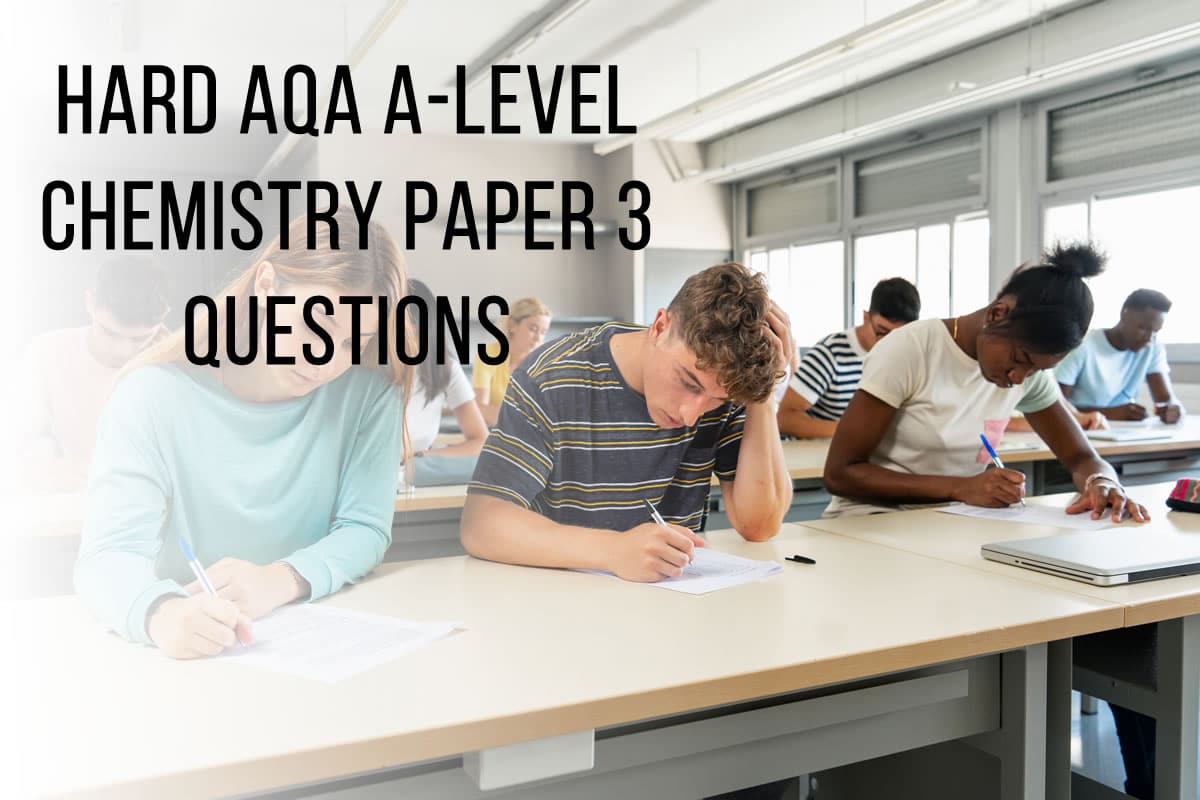
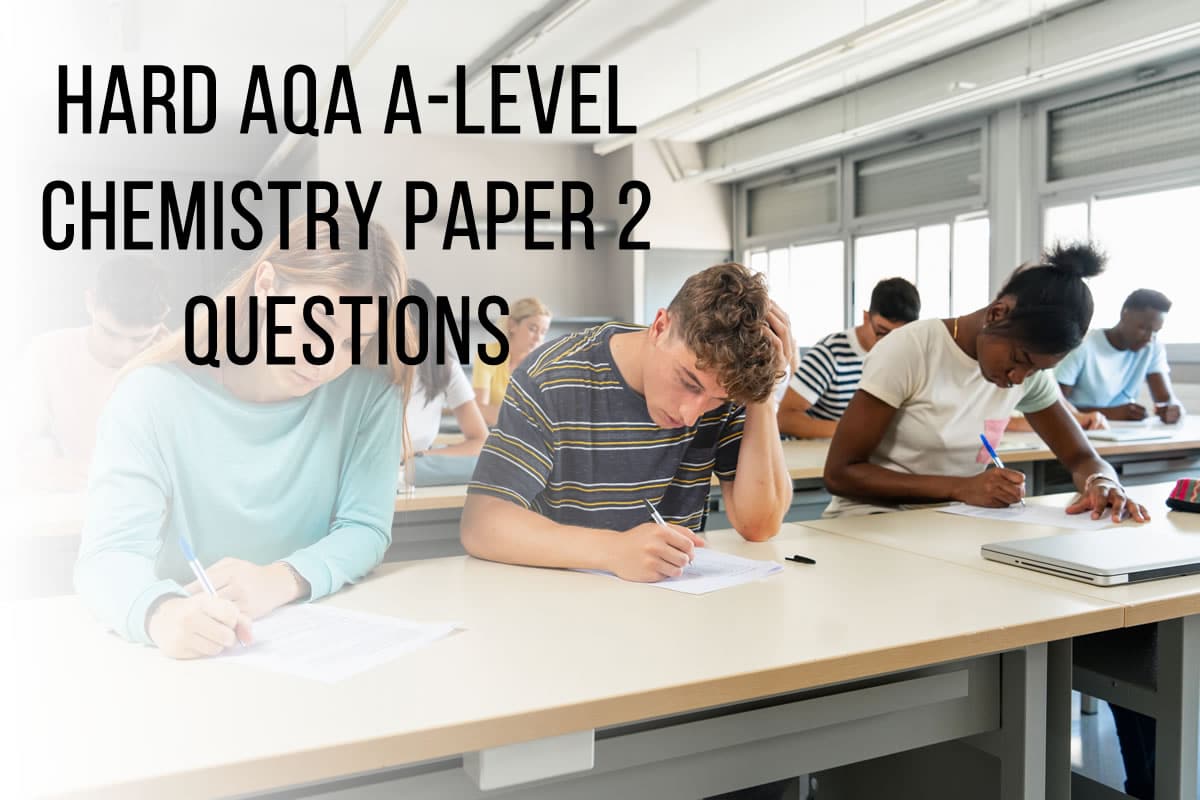
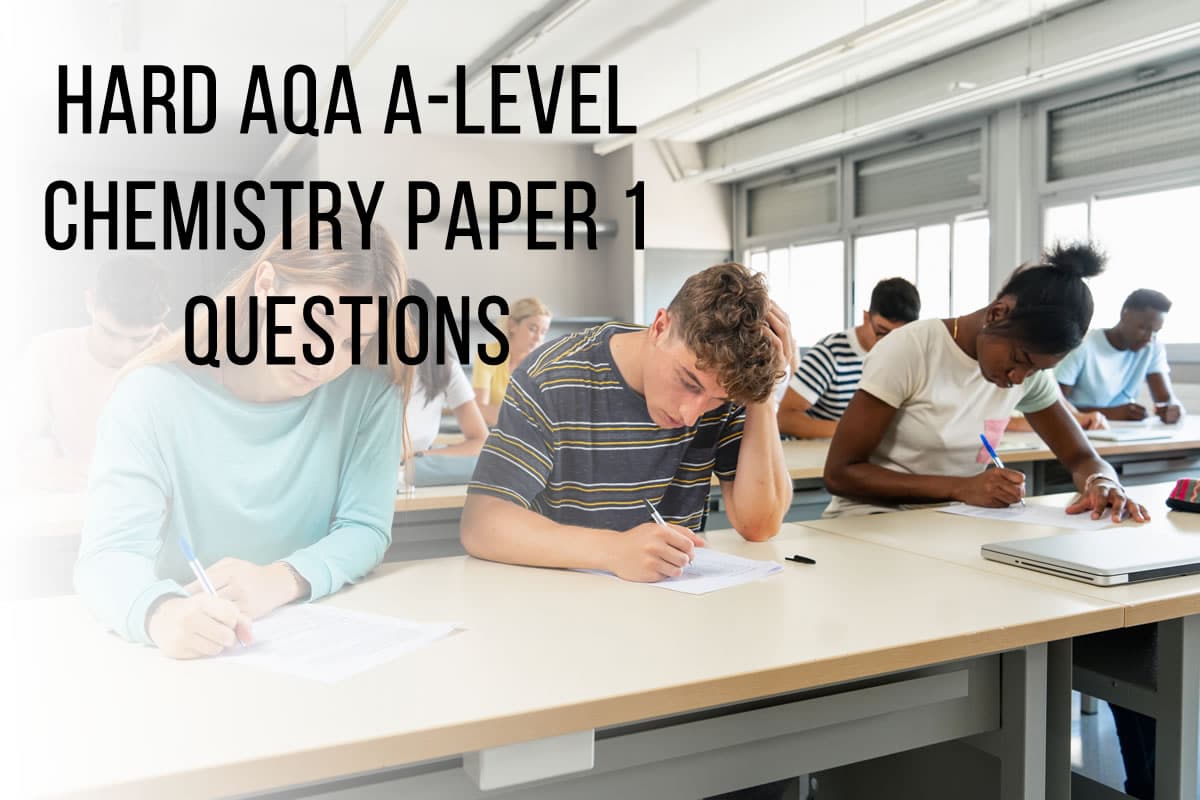
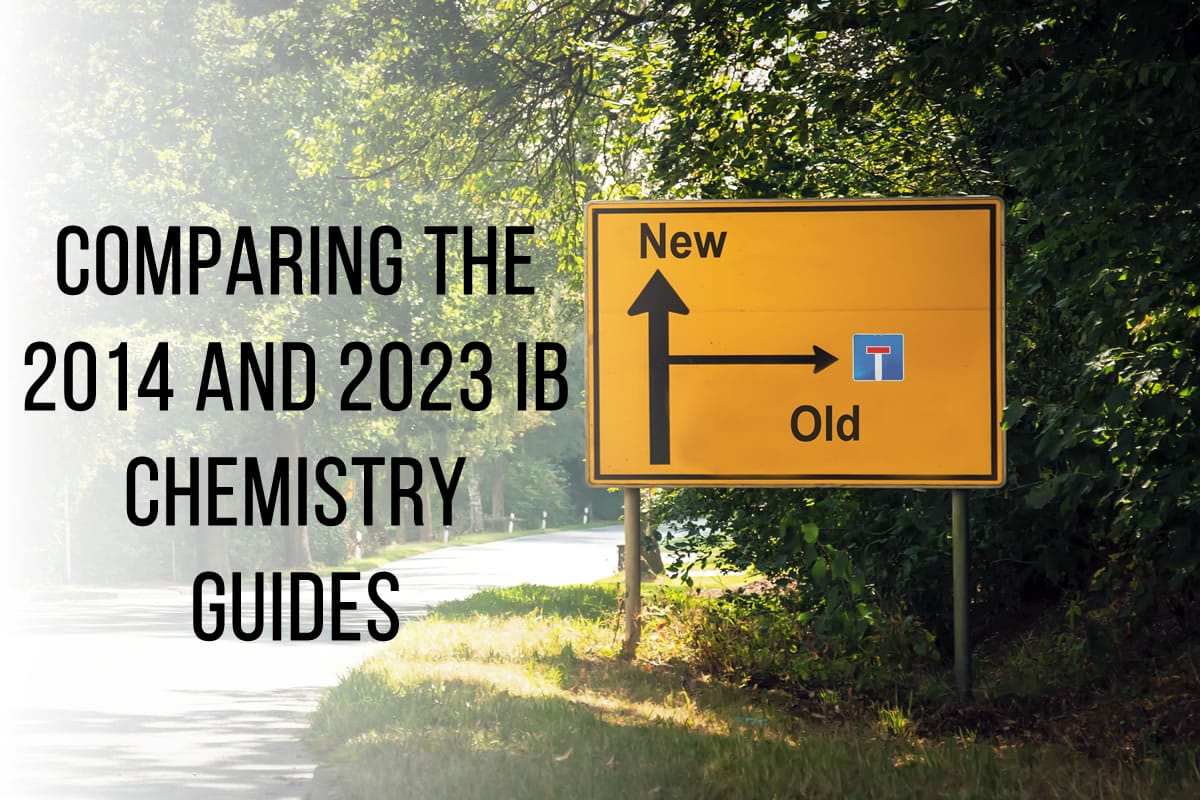
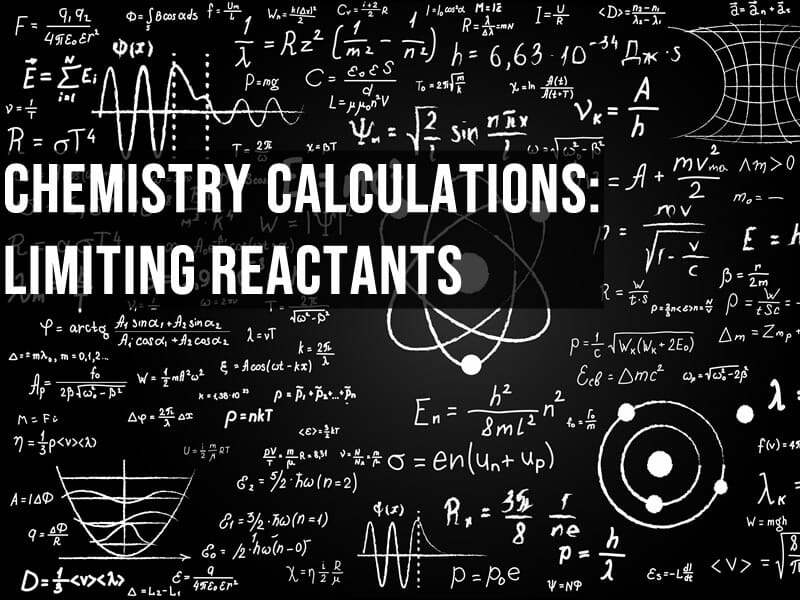
Hi do you have similar content for ocr?
Hi Louise, sorry, your message got filtered as spam – the OCR ones are in the pipeline.
Thanks, this is really useful guide! Do you have any plans for writing the guides for the other papers – AQA P1, P2, P3?
Thanks.
Hey Torben!
Glad to hear you found this guide useful. Yes, I’ve recently added a guide to paper 1 questions and will be adding the rest over the coming days.
Thanks for reading!